%%USERNAME%% %%ACCWORDS%% %%ONOFF%% |
 |
Enga mellom fjella: where from across the meadow, poems sing from mountains and molehills. |
|
Sentinel Marked as if you own me I bow before the Bitterroots and just like you my rocky soil, my withered grass lays prey to the empty sky. © Kåre Enga 2007 "Sentinel" ![October Tenth Leaves [#1543992]
Missoula, Montana Missoula, Montana](https://www.writing.com/main/images/action/display/ver/1238305613/item_id/1543992.jpg) Reader's Choice of Poems: "'heart's home'" "In the midst of silence" "Tales told over scones and hot tea" "At three" "Mauve Mavis" Reader's Choice of blog entries from my old blog "L'aura del Campo" "Death of Jeannie New Moon" "Winter: 18 Mas�'il (December 29)" "Even in chaos ... More hockey poems." "A Thanksgiving Dinner poem and the WDC Zoo" "Czernina (Dirk's-blood-soup?) and Murv Jacob's mural" FACES 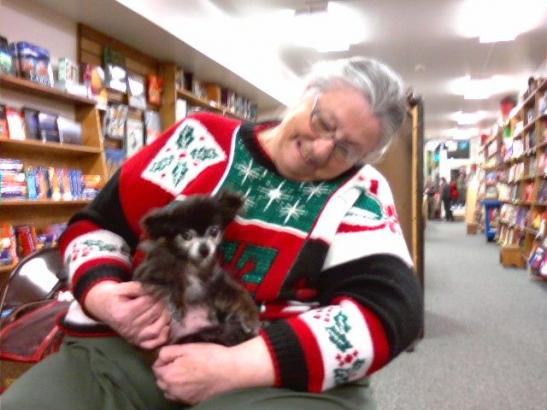 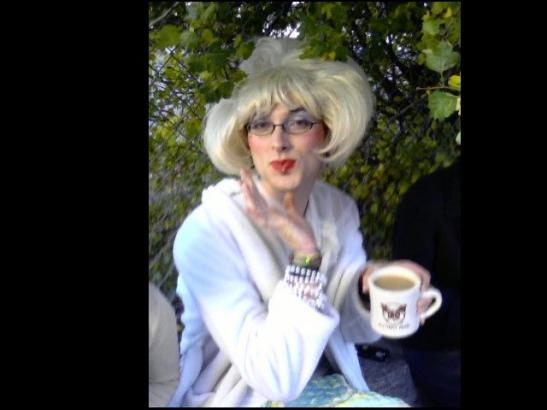 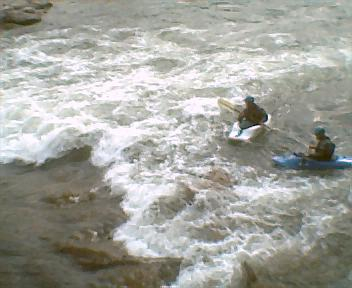 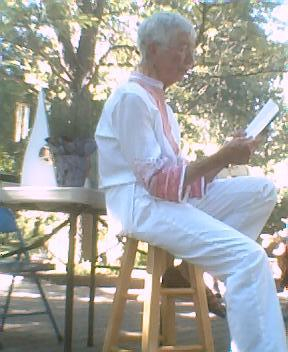 PLACES    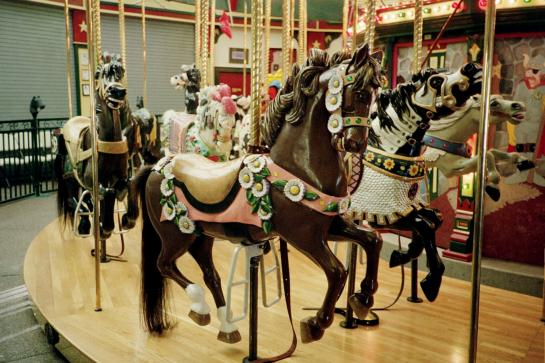 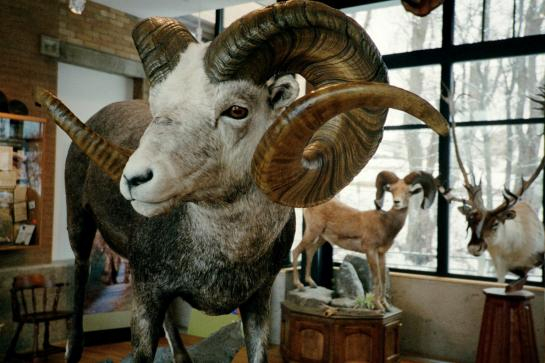 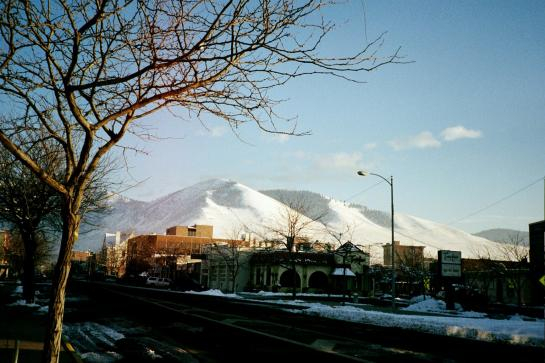  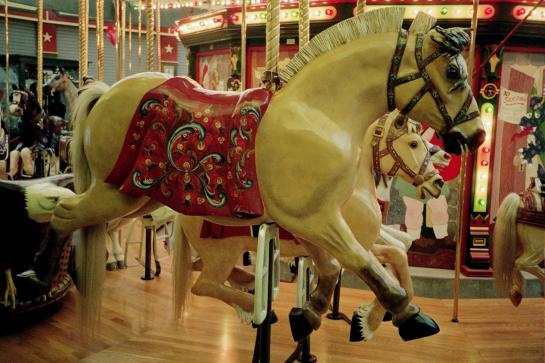 ![Flower [#1388686]
Yellow cheer from sarah Yellow cheer from sarah](https://www.writing.com/main/images/action/display/ver/1214020961/item_id/1388686.jpg) Kåre ~ until everything was rainbow, rainbow, rainbow! And I let the fish go. ~ Elizabeth Bishop The Fish |
| The problem is Victorian England. I'm allergic to it having been wounded by the American version of "looking down one's nose at others" by some members of my family. On the other hand I grew up in a factory town that laughed at many Victorian ideals. So ... this is going to be difficult if I allow it to trigger my traumas. I'll try to forget the reign of Don One who epitomized the Bleeding White Nationalism that continues to stain America. Attitude? Yes, I have attitude. I grew up with people being mocked and demeaned (my mother just looked down her nose); my mother and father "tried to teach us better". And in some ways they did. That said, I'm going to have to keep sneering characters to a minimum. Also, I know very little about Victorian England and care to know less. I'm not an Anglophile like most writers at WDC. I grew up on Ibsen, Basho, and 3 encyclopedias. Ah ... defiance ... which means I need to find a way around this. 1. Placed in Taiwan. A place I've visited but don't know enough about to write like a native. So I'll include as much culture as possible as I go along. My saving grace is that I know enough to know that I don't know and have an idea which questions to ask. 2. Think of it as a work translated into English ... with an English speaking audience in mind. Tricky? Yes. 3. The main characters must have personas struggling with personal issues based in their own culture. The male/female angst is moot. Li Vi and Chen Rong are both in charge of their family fortunes. They are the smart "business ladies". The gay/straight masculine/feminine angst is also very Western. Taiwan, like many Asian cultures was homosocial. The "we're boys so we must fight with each other" and "we fit into boxes of right and wrong" is a sad comment on American society. Taiwan is mostly Han so . 4. This is placed before Mandarin was forced down the throats of the Taiwanese after 1945 during the reign of the KMT. My main characters speak Hakka and Hokkien. The Hakka valued education and the Hokkien rice and commerce. Being bilingual was a necessity (unlike the attitude of many Americans and British who don't understand why everyone doesn't speak God's language ... theirs). Japanese is useful, as is English (Hong Kong) and Portuguese (Macau) and Mandarin (Beijing). British colonialism is feared as it's a real threat. So I need a couple upper-class snoots that the main characters will have to deal with (present-day young English travel-bloggers may help with attitude). Koga-san. Trader from Kyushu [Japanese with a bit of Dutch... that's never mentioned]. (Koga is a common last name in Fukuoka but not further north). He's interested in trade and is very formal... but spying on behalf of the Imperium (Japan was expanding). Mrs W. W. Walker (nee Ida Rose Kent) [British] (1890s names: Mary. Anna. Elizabeth. Emma. Margaret. Rose. Ethel. Florence. Ida. Bertha. Helen. 1860s...?) Mrs Walker was a curious creature who coming from money, both inherited from family and her less-than-lamented husband, did as she pleased. With a keen mind and an insatiable thirst for searching places that would upset her sister, she visits Tainan which provides her with grist for her letters and photographs. (photography quite the thing in 1890... even aerial photography possible... used by the Chen and Li family). Mrs. J. F. Bishop (nee Isabella Lucy Bird) is a real live person from that era (1831-1904?) and her notes may be useful. Jan Kwong from Hong Kong. Of mixed Eurasian descent. (see Sir Robert Hatong) Multi-lingual 'trader', ostensibly in the tea trade ... hmm ... so says he. Hong Kong was a deeply segregated community run by the British for the British. Because ... not because the British were better, oh hell no, because the British were Best! All three are veddy upper-class but with reasons to engage the more 'common folk'. These three characters dovetail with the commerce of the Li-Chen family business: the tea-trade, the aerial spying, the rice-fuel... Hoan however is more interested in the 'pirate' trade which also draws attention from Koga, Walker & Kwong (which Hoan thinks of as a consortium or a 'conspiracy', both useful and dangerous). Who's playing who and for what reason provides the tension. "Side stories": A. There's a recurring theme in Asian film showing how relationships in past generations influence current ones. What were Li and Chen to each other in the past? Enemies? Lovers? This could disrupt or cement their present business agreement. Persuant to personal preferences I'm going to make this more than a momentary quid-pro-quo. The reader may think that the relationship is on the rocks ... but ... hint from the author (moi) it ain't. B. Yaoi is a film/book genre that uses Asian homosociality to hint at homoeroticism which hints at actual same-sex sexual relationships. It's also referred to as BL (Boy-Love) and is geared towards a young female audience. The background of rivalry, family, interference, cultural norms, violence ... appeals to different audiences. Again, hint the Chok-Poh relationship will unfold, may be uneven, may run up against convention (both would be normally be expected to marry) however this is Tainan, a port city, not backwards Inland China. It will not be violent. Stupid maybe, accidents maybe ... they ain't the brightest members of their families (that would be their older sisters). Also ... this relationship endures in some form. The reader may disagree (but they're wrong!). C. Interference by Immortals. Mazu is a goddess (based on a person who actually existed) and her presence (or absence) calms or roils the Seas. And the Seas cannot be ignored by fisher-folk. Also, there are typhoons. Hoan is almost immortal. She is the offspring of a famous goddess Bai Zu Shen. Her symbol is the black/white venemous krait (snake)? Kraits are found in Taiwan. (rice paddy, swimmer, 2 hours till...) But... is she good, evil or neutral? And why is she a pirate? Or is she a victim of pirates? Who are these pirates? The legend says that, after thousands of years of practicing magic power, the white snake Bai Su Zhen transformed herself into a young woman and fell in love with the human man Xu Xian. Together, they ran a hospital, saving lots of human lives with medicine and magic. However, this love between goddess and human was forbidden by the world of the gods and, eventually, Bai Su Zhen was imprisoned in a tower for eternity. Since then, the Chinese regard her as a symbol of true love and good-heartedness. 黑帝 Hēidì — Black Deity is ascendent during his season of cold and water (winter). The season is important so it needs to be woven in as a sub-text. He is symbolized by a black dragon and tortoise-snake. Bluegreen Dragon (青龍 Qīnglóng). Is Chok-Poh's flying-dragon airship a silkpunk qinglong? https://en.wikipedia.org/wiki/Azure_Dragon Symbolizes East and Spring. Unfortunately it was used by the Qing Dynasty so it may have negative connotations as well... especially to Hakkas like Li. D. Use of color. This is winter (black). Yellow can denote a change of season to spring (green, blue-green). Chok-Poh are young and black should be their color (today black is common among young men in Taiwan) so... does flying-riding a blue-green dragon-boat send a message? White and red have very strong meanings of death and love and unless a subliminal message is being sent they can be avoided. E. Pirates. They do exist in the seas ... but are they actual characters or a mischaracterization by others? Hoan may seem like a pirate to others and for that reason either sought out, avoided or 'demonized'. The same could be said for Kwong and Koga. Is this merely an obsession of Mrs. Walker? Is this simply a red herring? Or a fish-net-full? COLORS: https://www.nationsonline.org/oneworld/Chinese_Customs/colours.htm Today: 1. Yellow is still reserved for royalty. Clothing and objects that are yellow in color still resemble a higher social status. Although each dynasty designated each official rank with their own color, yellow is reserved or the emperor himself. The color yellow and its shades are also the main color of Buddhism; thus it represents being free from worldly cares. YELLOW- nourishing, supporting, stabilizing, ripening, grounded, solid, reliability, sunbeam, warmth, clarity, royalty, good faith, empathy vs. anxiety Five Elements: Earth; Direction: Centre, zenith; Season: change of season (every 3rd month); Condition: damp, wind; Energy: stabilizing; Phase: Yin- Yang balance; Development: ripening; Planet: Saturn; Animals: naked (mankind); Celestial creature: (Yellow) Dragon, (Yellow) Qilin, Phoenix; Fruit: dates; Grain: rice; Action: thought; Sense: touch, taste; Sound: singing; Smell: fragrant; Taste: sweet, aromatic. Trigram bagua: K’un, Gen 2. Red is still used for happiness and joy. In fact, after the Ming Dynasty, only the Emperor's close relatives could have homes with red walls and yellow roof tiles. Peasants could only live in homes made with blue bricks and roof tiles. Today though, most houses are made of black tiles and white walls. RED - traditional bridal color, expansive, blooming, dynamic, enthusiastic, reaching upwards, good luck, celebration, happiness, joy, vitality, long life; red purple brings luck and fame, money, recognition, propriety, creativity, joy vs. over excitation. Five Elements: Fire; Direction: South; Season: summer; Condition: heat; Energy: expansive; Phase: full Yang; Development: blooming; Planet: Mars; Animal: winged, especially poultry; Heavenly creature: Vermilion Bird, (Red) pheasant; Fruit: apricot; Grain: beans; Action: sight; Sense: touch; Sound: laughing; Smell: scorched; Taste: bitter; Trigram bagua: Li 3. Blue-green is still a symbol of spring when everything is filled with vigor and vitality. Therefore, someone that is hoping for longevity and harmony will decorate with blue-green colors. GREEN - growing, generating, sprouting, striving, refreshing, balancing, calming, healing, self assurance, foundation, benevolence, health, harmony, sensitivity, patience vs. anger Five Elements: Wood; Direction: East; Season: spring; Condition: windy, rain; Energy: generative; Phase: new Yang; Development: generative; Planet: Jupiter; Animal: scaled, especially dragon; Heavenly creature: (Azure, Green) Dragon; Fruit: plum; Grain: wheat; Action: countenance; Sense: sight; Sound: calling; Smell: rancid; Taste: sour; Trigram bagua: Xun/Sun, Zhen 4. White is a symbol of the unknown and purity. The color white is used during the time of mourning, death, and during ghost festivals. Therefore Chinese people will wear white during a funeral or while summoning ghosts. WHITE - mourning, contracting, withering, righteousness, pureness, confidence, intuition, strength, organization, death, ancestral spirits, ghosts, courage vs. sadness Five Elements: Metal; Direction: West; Season: autumn; Condition: dry, clear; Energy: contracting; Phase: new Yin; Development: withering; Planet: Venus; Animal: furred, especially tiger; Celestial creature: (White) Tiger; Fruit: peach; Grain: hemp; Action: speech; Sense: smell; Sound: lamenting; Smell: putrid; Taste: pungent, spicy, acrid; Trigram bagua: Qian/ Quian, Dui 5. Black is used as the symbol of winter and the westerly skies which behold the heavens. It is used for times of the unknown and for the winter months. BLACK - color for young boys (who will continue the family/ancestor lineages), delving into the depth of something, flowing, dormant, conserving, immortality, stability, knowledge, trust, adaptability, spontaneity, power, career, will, emotional protection, calmness vs. lack of will Five Elements: Water; Direction: North; Season: winter; Condition: cold; Energy: conserving; Phase: full Yin; Development: dormant; Planet: Mercury; Animal: shelled, especially tortoise; Celestial creature: (Black) Tortoise; Fruit: chestnut; Grain: millet; Action: listening; Sense: hearing; Sound: moaning; Smell: rotten; Taste: salty; Trigram bagua: K’an From "Invalid Entry" Your sample story lines are as follows: 1. A well-meaning doctor, seeking a formula to regenerate amputated limbs, inadvertently creates monsters. 2. A group of fashion models use their looks and status to become close with captains of industry for the purposes of espionage, blackmail, or assassination. 3. Mysterious goings-on in an antique, curio, or pawn shop that almost always seems to be closed. 4. An airship full of explorers flying over a vast unexplored region discover . . . 5. An automaton is being used for nefarious purposes. 6. Continue to develop the one you originated in response to last week's lesson. From "Riding the water dragon (silkpunk): intro-excerpt. [70ab]" Elements Setting: Taiwan 1890s Silkpunk (flying-fish-and-dragons (airboats), airships, mechanical whales, steam, rice-alcohol-fuel) Conflicts: commerce and pirates, conventional cultural expectations at a time of change. Shenmo (immortals, gods): Mazu, Hoan Cryptids (mythological creatures): mo-sin-a Bromance/BL/Yaoi: Chok, Poh I want to create layers. Or maybe just hot-pot. For: "Invalid Item" Plus: "Invalid Item" |
| Riding the water dragon Silkpunk (bamboo, paper, silk) is an evocative way of describing that mix of organic materials with machine-driven tech. FORWARD? "Running tea and coffee to the coasts while lifting rice and seafood to the mountain villages was a lucrative business for the Chen and Li families. Although they were Hokkien and Hakka they wedded their complementary interests into a business." Ever since the Taiping rebellion and the establishment of the Formosa Republic business had been brisk. Let the Inland courts of pomp and circumstance do and say what they wanted. Here on the Beautiful Island it was all about business and trade. The straights provided plenty of seafood, the rice fields plenty of rice for noodles, sake and fuel. The Japanese had been invited to build a railroad. The Hakka had started hotels staffed by Philippinos. The Hokkien fished and mountain people just wanted to be left alone. It was idyllic for many and came to be known as the Halcyon Decade, until the pirates saw an opportunity to live off the wealth and missionaries came to manipulate the misfortunate. Neither succeeded. Perhaps due to the unintended consequences of the Li and Chen families. Perhaps due to the tolerance and resiliance of the multi-cultural Formosans. Li Vi, eldest daughter and the family-business boss, wanted to sell tea to the world one shipload at a time. Chen Rong, the smartest daughter in her family (by far), wanted to fly seafood to Beijing and Tokyo. Li Chok the unwanted son just wanted Chen Poh the invisible one. But that's another story. Hoan... daughter of an Immortal... in spite of her name... just wanted her cut. Chen and Li hatched a plan to have Chok and Poh ride the air in two seater airboats that were all the rage among the wealthy youth. Everyone else had fancy fish or dragons but they had other ideas. The world was changing and they wanted to observe it discretely. They bought one and, dyed the silk blue-of-the-sea over blue-of-the-sky. It was shaped like a fish or a wisp of cloud. Seen from above or below it was practically invisible. So, they sent their brothers to spy on the airships (dirigibles) that ferried people to and from Tainan and Xiamen, the sea-ferries and fishing vessels, the underwater boats that swam like whales driven by steam engines. The "fish-and-dragons" were super-light, bamboo framed, covered with silk, with a helium bladder to help it rise, a release valve to slowly descend, (equipped with mandatory parachutes of woven silk in case it crashed), shaped like a cigar, a baffled "tube" running though it from mouth to anus to control speed, a ridge to right it, flippers of fish and dragon feet to steer it. Just a toy-for-boys, of no real use. Li and Chen had found another use... and intended to blackmail a pirate... They fashioned another with a green top over grey, that looked like a tortoise or a mossy rock, to be used on cloudy days to fly over the mountains. They were happy that their younger useless brothers (Chok and Poh) thought this was fun and just a joke; at least they were keeping each other amused... and out of trouble. Plus, what news they brought helped business. But... Hoan was not as amused that they were finding out her secret hiding places. This threat from above was merely a nuisance ... so far ... but ... © Copyright 2021 Kåre Enga [178.70a] —A calm night in winter— "Their airboats rising like one of Pingxi's sky-lanterns. A deep-blue/light-blue flying-fish out of water, a blue-green sea dragon soaring." The young naive friends, Chok and Poh, rose in Li's blue-green three-seat dragon, tethered to a pole like a kite. It was past midnight, an hour when good people were fast asleep or fishing by lanterns for squid. It was calm with a crescent of moonlight, no one suspected them. If anyone were up and out they would only see a blue-green dragon and swear that they needed to cut back on the sake. But, the calm was deceptive. Mazu (媽祖), Goddess of the Sea a protector of the fisher-folk, had caught a cold, gone south to take a nap and the mô-sîn-á [魔神仔], mischievous tricksters, were out and about. © Copyright 2021 Kåre Enga [178.70b] Elements Setting: Taiwan 1890s Silkpunk (flying-fish-and-dragons (airboats), airships, mechanical whales, steam, rice-alcohol-fuel) Conflicts: commerce and pirates, conventional cultural expectations at a time of change. Shenmo (immortals, gods): Mazu, Hoan Cryptids (mythological creatures): mo-sin-a Bromance/BL/Yaoi: Chok, Poh I want to create layers. Or maybe just hot-pot. For: "Invalid Item" |